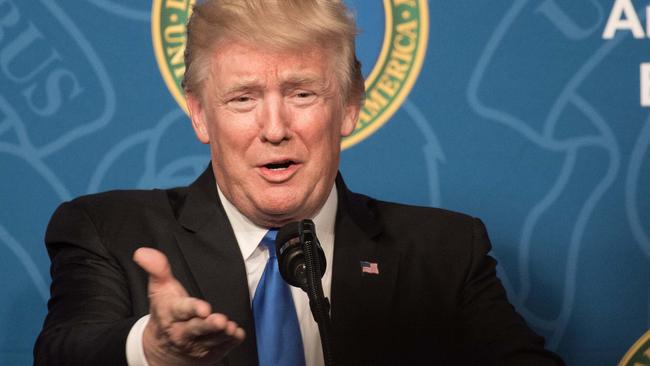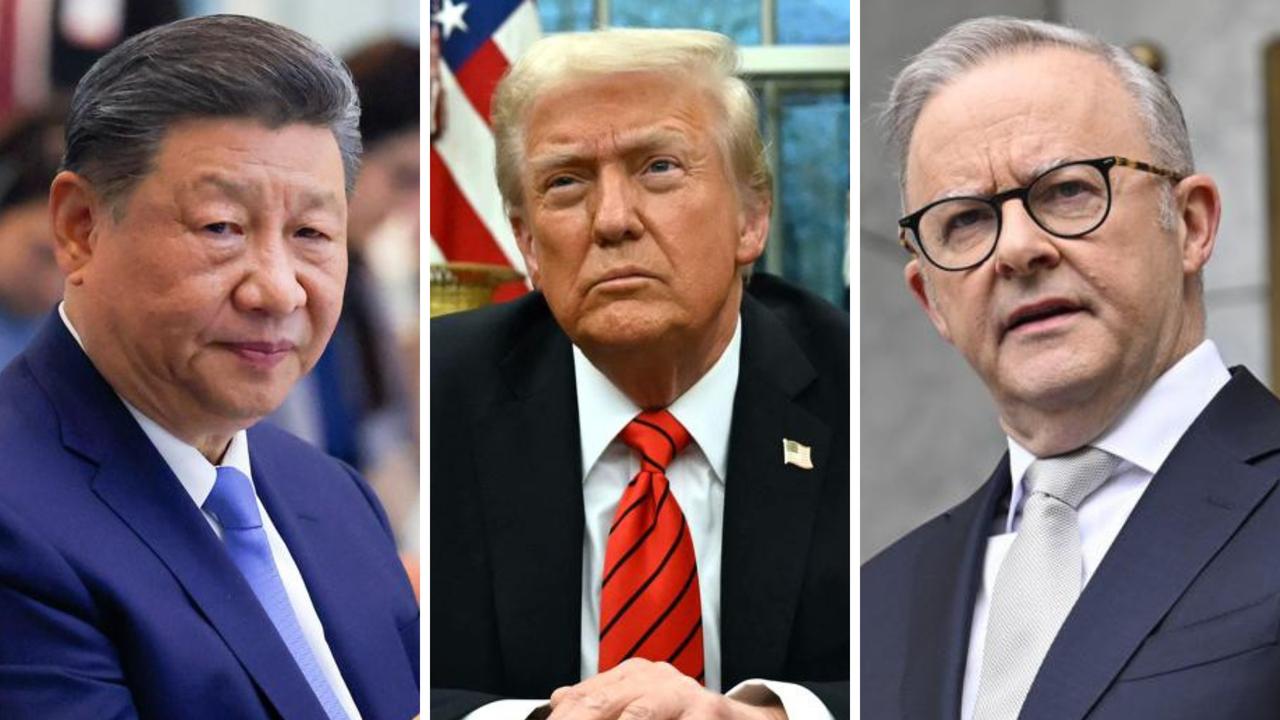The reality of Donald Trump’s travel ban
WITH Donald Trump’s travel ban now in place, the White House is declaring victory. But it can’t be the win Trump imagined.

WITH Donald Trump’s travel ban now in place, the White House is declaring victory on the first major policy push of his presidency. But it can’t be the win Trump imagined.
Once a blanket ban on Muslims, it then became a temporary ban on visitors from seven majority-Muslim countries and has now finally arrived as a list of confusing new visa restrictions.
Trump’s eye-popping campaign promise to deliver security by blocking entry into the US has become the incredible shrinking travel ban — rewritten, tweaked, watered down and litigated nearly beyond recognition.
All but lost in the five-month editing process and court fight is the president’s stated aim: keeping dangerous people out of the US. Trump initially billed the temporary ban on visitors from certain countries and refugees as an urgent and necessary tool to keep out would-be terrorists while the government crafted new “extreme vetting” procedures. But five months and no ban later, the administration has made little effort to build a stronger case and offered scant new evidence to back up its claims.
The restrictions, which took effect today, reinstated temporarily by the Supreme Court, are a far cry from Trump’s initial executive order, which sparked protests, chaos at airports and legal challenges in his administration’s earliest days. That order was withdrawn after being replaced with a version that Trump himself described as “watered down” and “politically correct.”
“What the Supreme Court did was water it down even further,” Kari Hong, an immigration law expert at Boston College Law School, said of the version that took effect.
The justices’ ruling exempts people if they can prove a “bona fide relationship” with a US person or entity. Under State Department guidelines, visa applicants from six Muslim-majority countries for the next 90 days need to show close family or business ties to the United States.
Citizens of Syria, Sudan, Somalia, Libya, Iran and Yemen with a parent, spouse, child, adult son or daughter, son-in-law, daughter-in-law or sibling already in the United States could be allowed to enter.
Journalists, students, workers or lecturers who have valid, formal invitations or employment contracts in the US are exempt from the ban. The same requirements, with some exceptions, apply for the next 120 days to refugees from all nations who are still awaiting approval.
Experts aren’t expecting large numbers of people to be immediately affected. Temple University law professor Peter Spiro, an immigration law expert, noted the numbers are difficult to predict because of likely legal challenges over the interpretation of the term “bona fide”, which the court did not define. While Trump declared the court ruling a “win,” his administration did not lay out a clear case for the national security merits of the plan. In a conference call with reporters Thursday, only one of five administration officials - one representing the White House - couched the Supreme Court order as a step that will have a marked impact on improving national security. The other four officials, from the departments of State, Justice and Homeland Security, described the actions more narrowly.
Asked specifically how the measures would improve security, a State Department official said only, “The guidance we have from the president is to put a pause on certain travel while we review our security posture.” The officials all spoke on condition of anonymity despite describing a public executive order.
The White House sees the Supreme Court decision as a temporary measure, and is confident it will win on the merits when the court hears the case later this year.



